| Listing 1 - 10 of 22 | << page >> |
Sort by
|
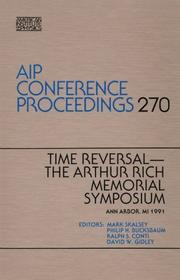
ISBN: 1563961059 Year: 1993
Abstract | Keywords | Export | Availability | Bookmark
 Loading...
Loading...Choose an application
- Reference Manager
- EndNote
- RefWorks (Direct export to RefWorks)
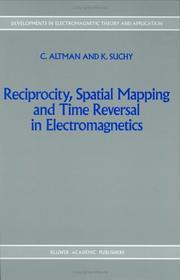
ISBN: 0792313399 Year: 1991 Publisher: Dordrecht : Kluwer academic,
Abstract | Keywords | Export | Availability | Bookmark
 Loading...
Loading...Choose an application
- Reference Manager
- EndNote
- RefWorks (Direct export to RefWorks)
Electromagnetism. --- Reciprocity theorems. --- Time reversal.
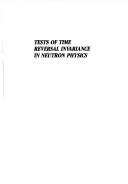
ISBN: 9971504634 9789971504632 Year: 1987 Publisher: Singapore: World scientific,
Abstract | Keywords | Export | Availability | Bookmark
 Loading...
Loading...Choose an application
- Reference Manager
- EndNote
- RefWorks (Direct export to RefWorks)
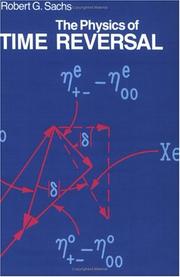
ISBN: 0226733300 0226733319 9780226733319 9780226733302 Year: 1997 Publisher: Chicago (Ill.) : University of Chicago press,
Abstract | Keywords | Export | Availability | Bookmark
 Loading...
Loading...Choose an application
- Reference Manager
- EndNote
- RefWorks (Direct export to RefWorks)
Symmetry (Physics). --- Time reversal. --- Time reversal --- Symmetry (Physics) --- Reversal, Time --- Nuclear physics --- Quantum theory --- Space and time --- Invariance principles (Physics) --- Symmetry (Chemistry) --- Conservation laws (Physics) --- Physics
Book
ISBN: 9781009217347 1009217348 9781009500173 9781009217309 1009217313 100921733X 1009500171 9781009217316 9781009217330 Year: 2024 Publisher: Cambridge Cambridge University Press
Abstract | Keywords | Export | Availability | Bookmark
 Loading...
Loading...Choose an application
- Reference Manager
- EndNote
- RefWorks (Direct export to RefWorks)
The Element reconstructs, analyses and compares different derivational routes to a grounding of the Arrow of Time in entropy. It also evaluates the link between entropy and visible disorder, and the related claim of an alignment of the Arrow of Time with a development from order to visible disorder. The Element identifies three different entropy-groundings for the Arrow of Time: (i) the Empirical Arrow of Time, (ii) the Universal Statistical Arrow of Time, and (iii) the Local Statistical Arrow of Time. The Element will also demonstrate that it is unlikely that high entropy states will always coincide with visible disorder. Therefore, it will dispute that there is a strong link between the Arrow of Time and visible disorder.
Entropy. --- Second law of thermodynamics. --- Statistical thermodynamics. --- Time. --- Time reversal. --- Time --- Philosophy.
Book
ISBN: 1281603619 9786613784308 9814383171 9789814383172 9814383163 9789814383165 9781281603616 Year: 2012 Volume: 13 Publisher: Hackensack, N.J. : World Scientific,
Abstract | Keywords | Export | Availability | Bookmark
 Loading...
Loading...Choose an application
- Reference Manager
- EndNote
- RefWorks (Direct export to RefWorks)
A small army of physicists, chemists, mathematicians, and engineers has joined forces to attack a classic problem, the "reversibility paradox", with modern tools. This book describes their work from the perspective of computer simulation, emphasizing the authors' approach to the problem of understanding the compatibility, and even inevitability, of the irreversible second law of thermodynamics with an underlying time-reversible mechanics. Computer simulation has made it possible to probe reversibility from a variety of directions and "chaos theory" or "nonlinear dynamics" has supplied a useful
Irreversible processes. --- Thermodynamics. --- Chemistry, Physical and theoretical --- Dynamics --- Mechanics --- Physics --- Heat --- Heat-engines --- Quantum theory --- Processes, Irreversible --- Equilibrium --- Molecular dynamics --- Statistical mechanics --- Thermodynamics --- Nonequilibrium thermodynamics --- Time reversal --- Computer simulation --- Time reversal - Computer simulation
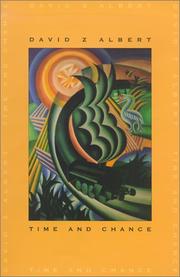
ISBN: 0674003179 9780674003170 0674011325 0674020138 Year: 2000 Publisher: Cambridge, MA : Harvard University Press,
Abstract | Keywords | Export | Availability | Bookmark
 Loading...
Loading...Choose an application
- Reference Manager
- EndNote
- RefWorks (Direct export to RefWorks)
This study is an attempt to get to the root of the tension between the best scientific pictures of the physical structure of the world and the everyday, empirical experience of it. This book examines the problem of the direction of time - the notion that whatever can happen, can happen backwards.
Physics --- Thermodynamics --- Time reversal. --- Philosophy. --- 531.111 --- -Time reversal --- #WSCH:AAS2 --- Reversal, Time --- Nuclear physics --- Quantum theory --- Space and time --- Natural philosophy --- Philosophy, Natural --- Physical sciences --- Dynamics --- Dimensions. Space and time --- Philosophy --- 531.111 Dimensions. Space and time --- Time reversal --- Physics - Philosophy.
Book
ISBN: 9782847617672 Year: 2014 Publisher: Marseille : Al Dante,
Abstract | Keywords | Export | Availability | Bookmark
 Loading...
Loading...Choose an application
- Reference Manager
- EndNote
- RefWorks (Direct export to RefWorks)
L'inversion temporelle étourdit le spectateur de cinéma depuis l'invention du cinématographe : les frères Lumière montraient déjà dès les premières projections un mur démoli qui se redresse, ou des plongeurs qui sortent de l'eau et reviennent sur leur plongeoir. Derrière ce trucage élémentaire du défilement inversé, il y a un enjeu philosophique surprenant qui est révélateur non seulement du cinéma dans son entier mais d'une façon de redéfinir le temps lui-même. Le cinéma est-il l'art du temps, ou l'art de ce contretemps qui se décline sous d'innombrables facettes, de l'inversion temporelle pelliculaire la plus spectaculaire et la plus dénuée de sens à toutes les sortes de retours dans le passé qui défient la mort, l'irréversible, la causalité, la raison, la pensée, l'ordre établi ? Cette grande figure traverse à la fois les plus grands classiques de l'histoire du cinéma (Chaplin, Cocteau, Dreyer, Coppola, Bergman, Wells, Lynch, Hannecke…), et une myriade incroyable de curiosités insolites et rares qui relèvent du cinéma expérimental, de l'art vidéo, de l'art contemporain, de l'installation… sans compter que l'approche proposée ici, qui se veut la plus large et la plus complète possible, aborde aussi la musique et la littérature. Avec son vaste corpus d'œuvres et les nombreux champs intellectuels mobilisés, ce livre entend non pas tant faire le point sur cette figure complexe, que réactiver sa subversion, plus que jamais nécessaire en ces temps de mélancolie post-moderne et post-politique.
Time reversal --- Time in motion pictures --- Inversion du temps --- Temps au cinéma --- Temps (philosophie) --- Récit filmique --- Au cinéma --- Temps au cinéma --- Récit filmique. --- Au cinéma.
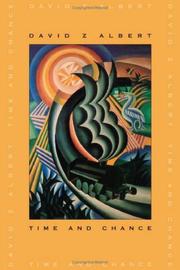
ISBN: 0674020138 9780674020139 0674011325 9780674011328 0674003179 9780674003170 Year: 2003 Publisher: Cambridge, Mass. Harvard University Press
Abstract | Keywords | Export | Availability | Bookmark
 Loading...
Loading...Choose an application
- Reference Manager
- EndNote
- RefWorks (Direct export to RefWorks)
This study is an attempt to get to the root of the tension between the best scientific pictures of the physical structure of the world and the everyday, empirical experience of it. This book examines the problem of the direction of time - the notion that whatever can happen, can happen backwards.
Time reversal. --- Physics --- Reversal, Time --- Nuclear physics --- Quantum theory --- Space and time --- Philosophy. --- Inversion du temps --- Physique --- Philosophie --- Theory of knowledge --- Philosophy of science
Book
ISBN: 9400715293 9400715307 9400795289 Year: 2011 Publisher: Dordrecht : Springer Science,
Abstract | Keywords | Export | Availability | Bookmark
 Loading...
Loading...Choose an application
- Reference Manager
- EndNote
- RefWorks (Direct export to RefWorks)
This long awaited second edition traces the original developments from the 1970s and brings them up to date with new and previously unpublished material to give this work a new lease of life for the early twenty-first century and readers new to the topic. In the winter of 1970-71, Colman Altman had been finding almost exact symmetries in the computed reflection and transmission matrices for plane-stratified magnetoplasmas when symmetrically related directions of incidence were compared. At the suggestion of Kurt Suchy the complex conjugate wave fields, used to construct the eigenmode amplitudes via the mean Poynting flux densities, were replaced by the adjoint wave fields that would propagate in a medium with transposed constitutive tensors, to yield a scattering theorem – reciprocity in k-space -- in the computer output. To prove the result analytically, one had to investigate the properties of the adjoint Maxwell system, and the two independent proofs that followed, in 1975 and 1979, proceeded according to the personal preference of each of the authors. The proof given in this volume, based on the hindsight provided by later results, is much more simple and concise. Later, when media with bianisotropic constitutive tensors were investigated, it was found that conjugate (reciprocal) media and wave fields could be formed by any orthogonal spatial mapping of those in the original problem, after media and fields were reversed in time. The result was still quite general and not limited to stratified systems. The second line of development was to find the link between reciprocity in k-space and Lorentz reciprocity involving currents and sources in physical space. This was done for plane-stratified media by applying the scattering theorem to the plane-wave spectrum of eigenmodes radiated by one current source and reaching the second source. The reverse linkage between Lorentz reciprocity and reciprocity in k-space had already been found. However, this was the first time that the results were presented in a systematic and mathematically well-defined procedure to serve as a tool for solving problems of reciprocity and scattering symmetries. The use of time reversal gives rise to problems of causality when sources are present, but when the interaction between two systems is involved the non-causal effects are irrelevant. The insight gained during these investigations enabled the authors to present many of the earlier theorems and results, both their own and those of others, in a compact and unified approach, which has been the main strength of this book. This new edition has been revised, corrected and updated where necessary to give a complete picture of this interesting topic for the present generation of scientists.
Electromagnetism. --- Reciprocity theorems. --- Time reversal. --- Electromagnetism --- Reciprocity theorems --- Time reversal --- Physics --- Physical Sciences & Mathematics --- Light & Optics --- Electricity & Magnetism --- Electromagnetics --- Reversal, Time --- Reciprocal theorems --- Theorems, Reciprocity --- Physics. --- Optics. --- Electrodynamics. --- Electrical engineering. --- Optics and Electrodynamics. --- Theoretical, Mathematical and Computational Physics. --- Electrical Engineering. --- Nuclear physics --- Quantum theory --- Space and time --- Mathematics --- Magnetic induction --- Magnetism --- Metamaterials --- Computer engineering. --- Classical Electrodynamics. --- Computers --- Design and construction --- Mathematical physics. --- Dynamics --- Light --- Electric engineering --- Engineering --- Physical mathematics
| Listing 1 - 10 of 22 | << page >> |
Sort by
|

 Search
Search Feedback
Feedback About UniCat
About UniCat  Help
Help News
News